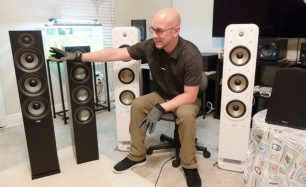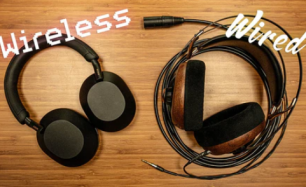The Evolution of Headphone Technology: From Wired to True Wireless
Headphones have come a long way since their bulky beginnings, evolving from a simple audio tool into a sleek, high-tech essential for everyday life. Whether you’re taking work calls, listening to your favorite playlist during a run, or simply escaping into a podcast, headphones have become an extension of our personal soundscape. For women juggling careers, commutes, workouts, and downtime, the shift from wired to wireless—especially true wireless—has been a game-changer.
This evolution in headphone technology didn’t just happen overnight. It’s the result of decades of innovation driven by the desire for better sound quality, convenience, and style. Today’s earbuds are not only lighter and more portable, but also smarter, offering features like noise cancellation, voice assistants, and touch controls—all without a single cord in sight.

1. The Wired Era: Durable and Dependable
For decades, wired headphones reigned supreme. Known for their reliability and consistent audio quality, they were a staple for music lovers, gamers, and professionals alike. Whether it was the iconic foam-covered Walkman headphones of the ‘80s or the earbuds bundled with early smartphones, wired options were accessible and practical. The major advantage? No need to charge, and minimal signal interference. But wires also meant tangles, limited movement, and fragility—one tug too hard, and the sound could cut out.

…
2. The Rise of Wireless: Cutting the Cord
As Bluetooth technology improved in the early 2000s, the first wave of wireless headphones hit the market. While early models were bulky and sometimes suffered from poor audio quality or latency issues, they offered a taste of what was to come—freedom. No more untangling cords, and no more being tethered to a device. Over time, Bluetooth connectivity became more stable, batteries lasted longer, and designs became sleeker. Wireless over-ear models gained popularity for commuting and workouts, offering a balance of comfort and performance.
3. Enter True Wireless: The Age of Ultimate Convenience
The launch of Apple’s AirPods in 2016 ushered in a new era—true wireless earbuds. Unlike standard wireless headphones, true wireless earbuds have no cables at all—not even between the left and right earpieces. This innovation allowed for even greater freedom and portability, especially for people on the go.
Today’s true wireless models are packed with smart features like active noise cancellation, ambient listening modes, water resistance, and customizable touch controls. For busy women, they’ve become a stylish, discreet, and multifunctional accessory—whether you’re hopping between Zoom meetings, heading out for a jog, or multitasking at home.

Final Thoughts
From wired reliability to true wireless freedom, headphone technology has transformed the way we listen, move, and connect. As advancements continue, we can expect even more intelligent, ergonomic, and immersive audio experiences. But at the heart of it all is one simple truth: sound is personal—and the right headphones help you take your world with you, wherever you go.








